I tested TCL's affordable Q7 4K TV, and it's a great deal – but with a catch
TCL’s 6-series TVs have presented a low-cost option for those in the US seeking the brightness benefits of mini-LED backlighting along with the color benefits of QLED. For 2023, the company is positioning its new Q7 class models as the successor to the 6-Series, although this time around there’s no mini-LED backlight. To get that feature, you’ll need to step up to the QM8 class, which is TCL’s flagship TV series for 2023. Q7 class sets are either available now or coming soon depending on the screen size.
I recently had an opportunity to see the full range of new TCL TVs and later perform a quick hands-on test of an 85-inch Q7 class model. During the same session, I was also able to evaluate an 85-inch QM8 at greater length and in more favorable viewing conditions – the space where the Q7 was set up had relatively bright lighting, and the clock was ticking fast during my hands-on. Even so, I was able to run a few key tests and get a good sense of the Q7’s basic performance.
Q7 class TVs come in 55-, 65-, 75-, and 85-inch screen sizes with prices ranging from $799.99 to $2,199.99. The 65-inch model sells for $999, which is the same price as last year’s same-size 6-Series. The Q7 uses the Google TV smart platform – the company has not announced a Roku version – and features a regular LED backlight with up to 200 local dimming zones. TCL specifies peak brightness at 1,000 nits. Q7 class sets use the same AIPQ Engine Gen3 processor found in the QM8 class, but unlike with the QM8, there’s no anti-glare screen coating.
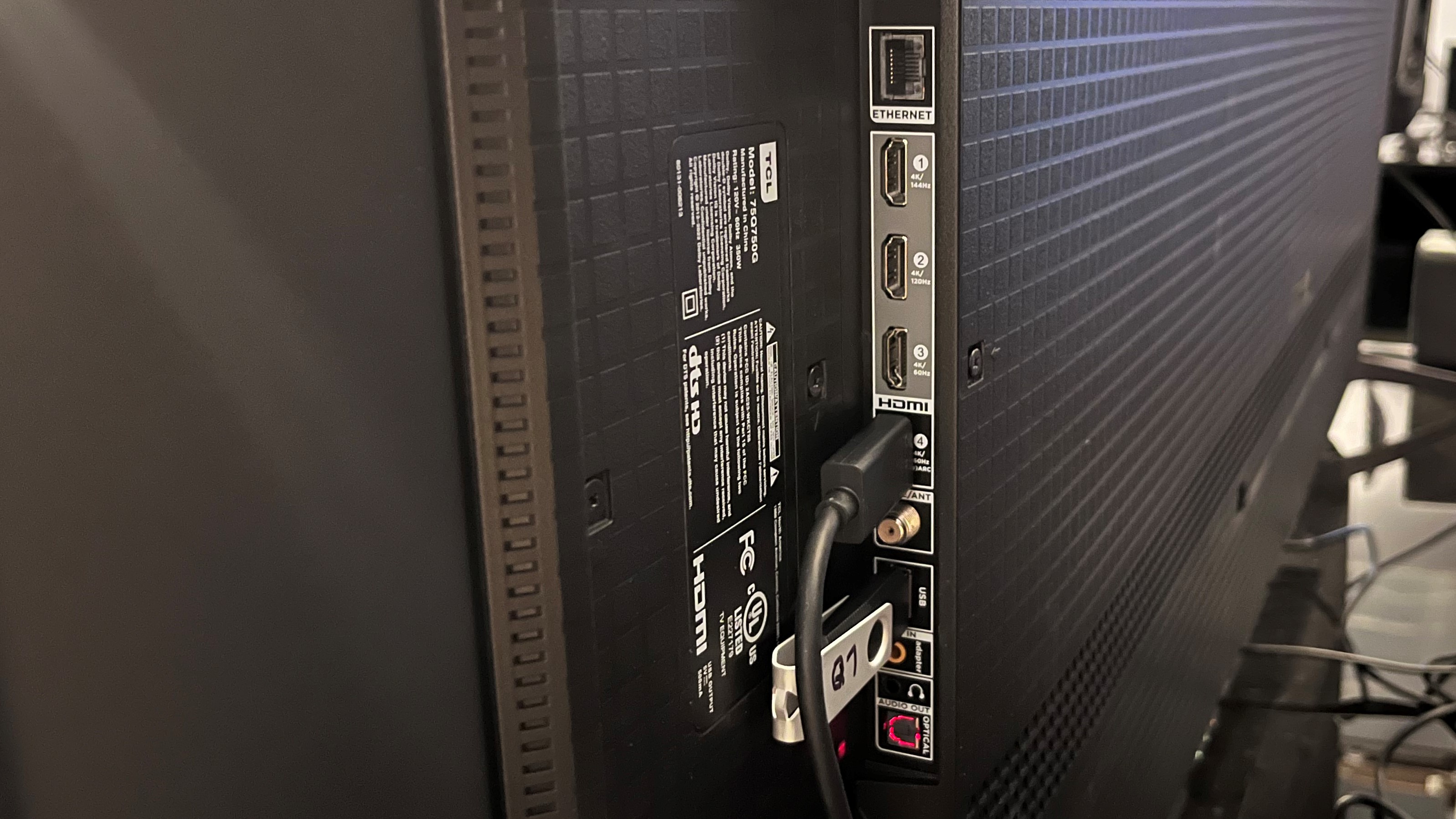
Q7 TVs come with reversible feet that can be adapted for a range of stand and soundbar options. They have a native 120Hz display panel with 144Hz VRR support for gaming, and a Game accelerator 240 feature for 240Hz VRR gaming at lower resolution. HDR format support includes the Dolby Vision IQ, HDR10+, HDR10, and HLG formats, and they are also IMAX Enhanced certified.
You’ll find four HDMI inputs including one with 4K 120Hz support and a second with 4K 144Hz support, along with an antenna input for the TV’s ATSC 1.0 digital TV tuner. Dolby Atmos and DTS Virtual:X audio formats are supported and there’s a built-in 2 x 15-watt speaker system. A Bluetooth output provides an additional audio option for late-night viewing.
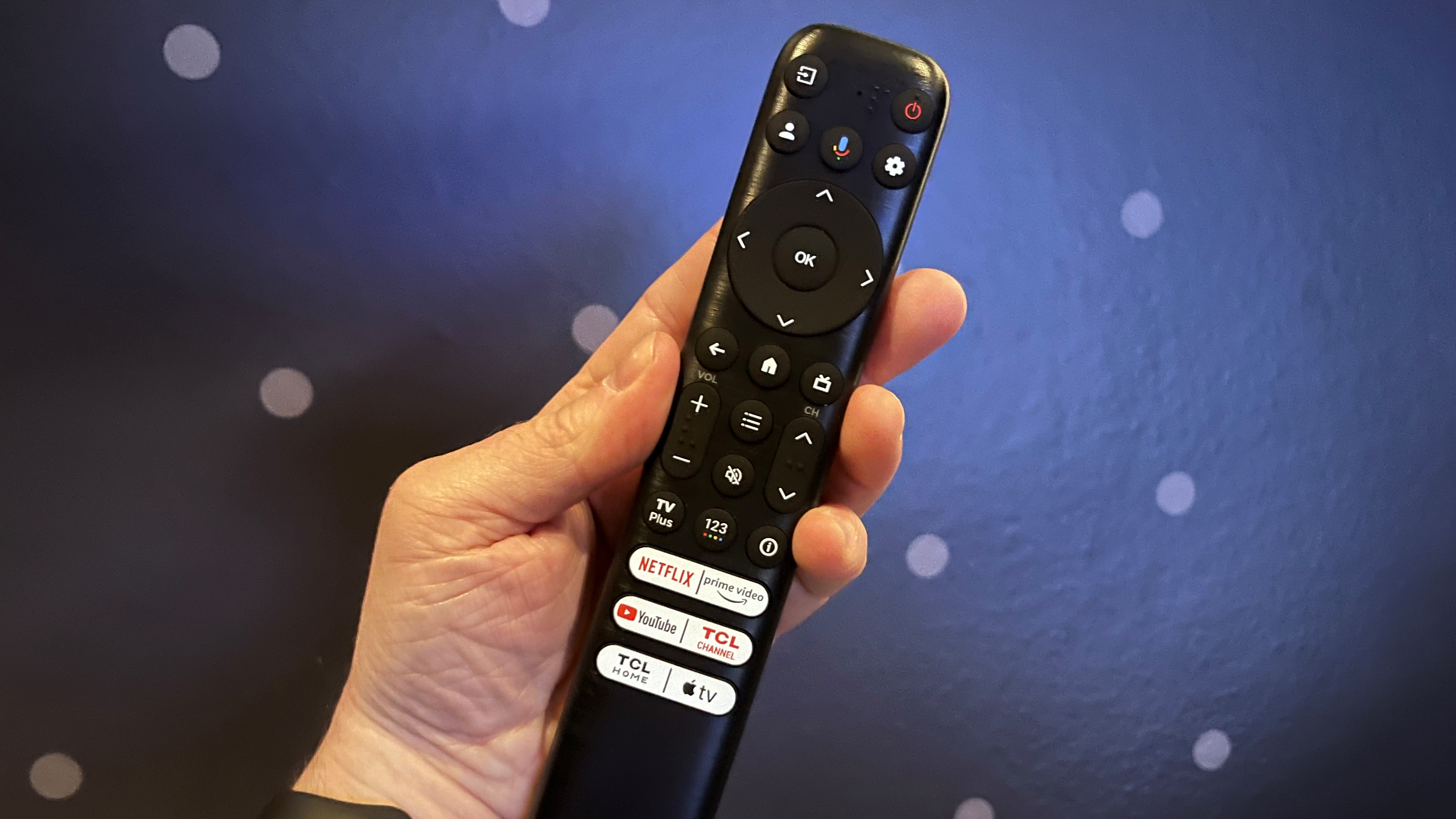
Each Q7 class TV comes with a backlit remote control. They also work with Amazon Alexa, Google Assistant, and Apple HomeKit, and both AirPlay 2 and Chromecast are onboard for streaming from a phone or tablet.
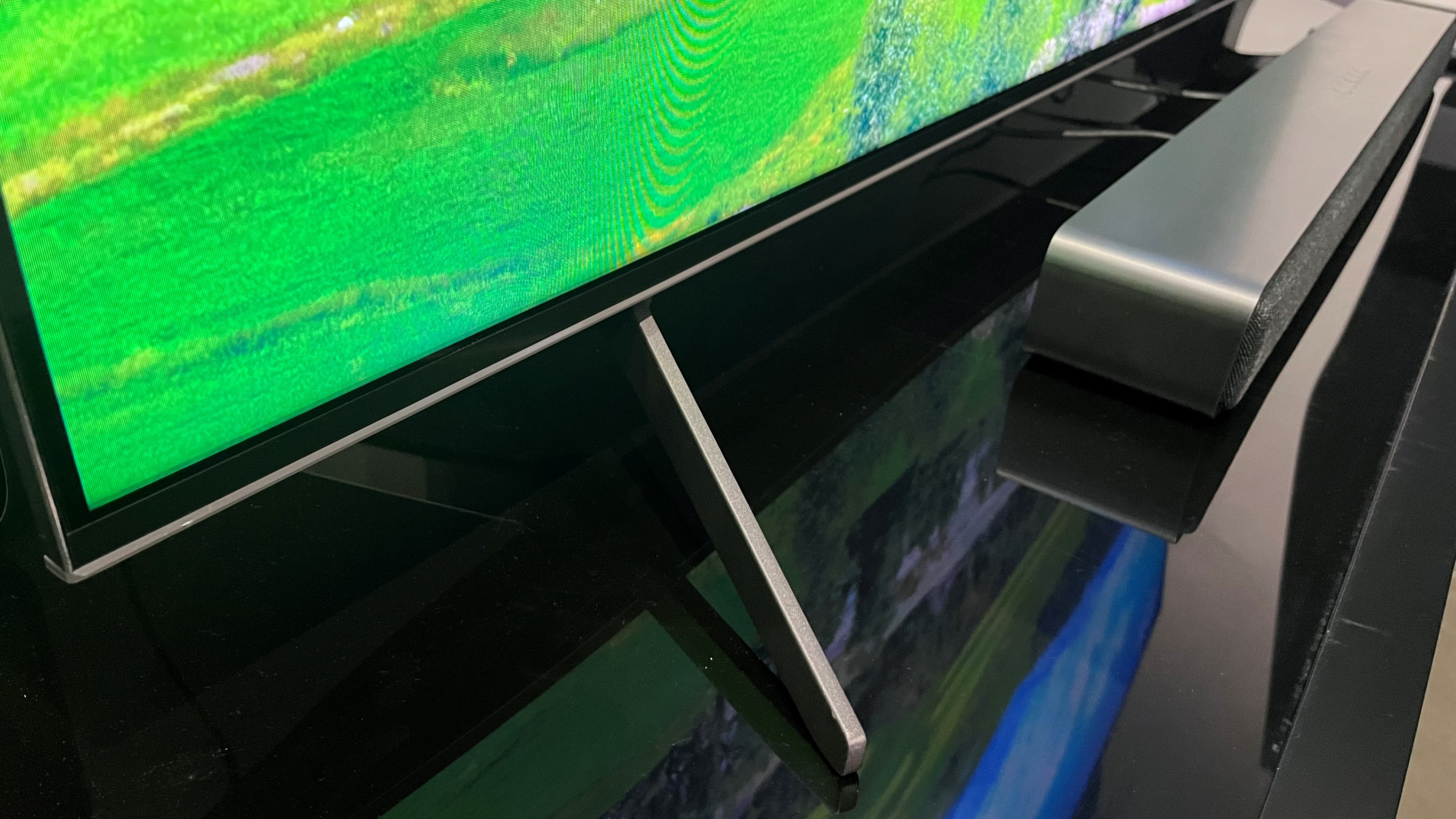
Bright enough, or is it?
Performing some run-and-gun light output measurements using a 10 percent white test pattern with the set in HDR mode, I confirmed that the 85-inch Q7 was capable of hitting 900-nit peaks in the default Vivid preset and 876 nits in the default Movie preset. That result is below, but within range of, TCL’s 1,000 nit peak brightness specification for the Q7 series. More interesting, it’s well below last year’s model, which yielded 1,317 nits in our TCL 6-series Roku TV (2022) review.
Checking out the montage sequences from the Spears & Munsil Ultra HD HDR test Blu-ray disc, the Q7 delivered rich colors and good contrast. HDR highlights notably lacked the visual punch of the QM8 model I had tested earlier, but image quality overall was quite good given the less-than-optimal lighting conditions in the space where I was viewing.
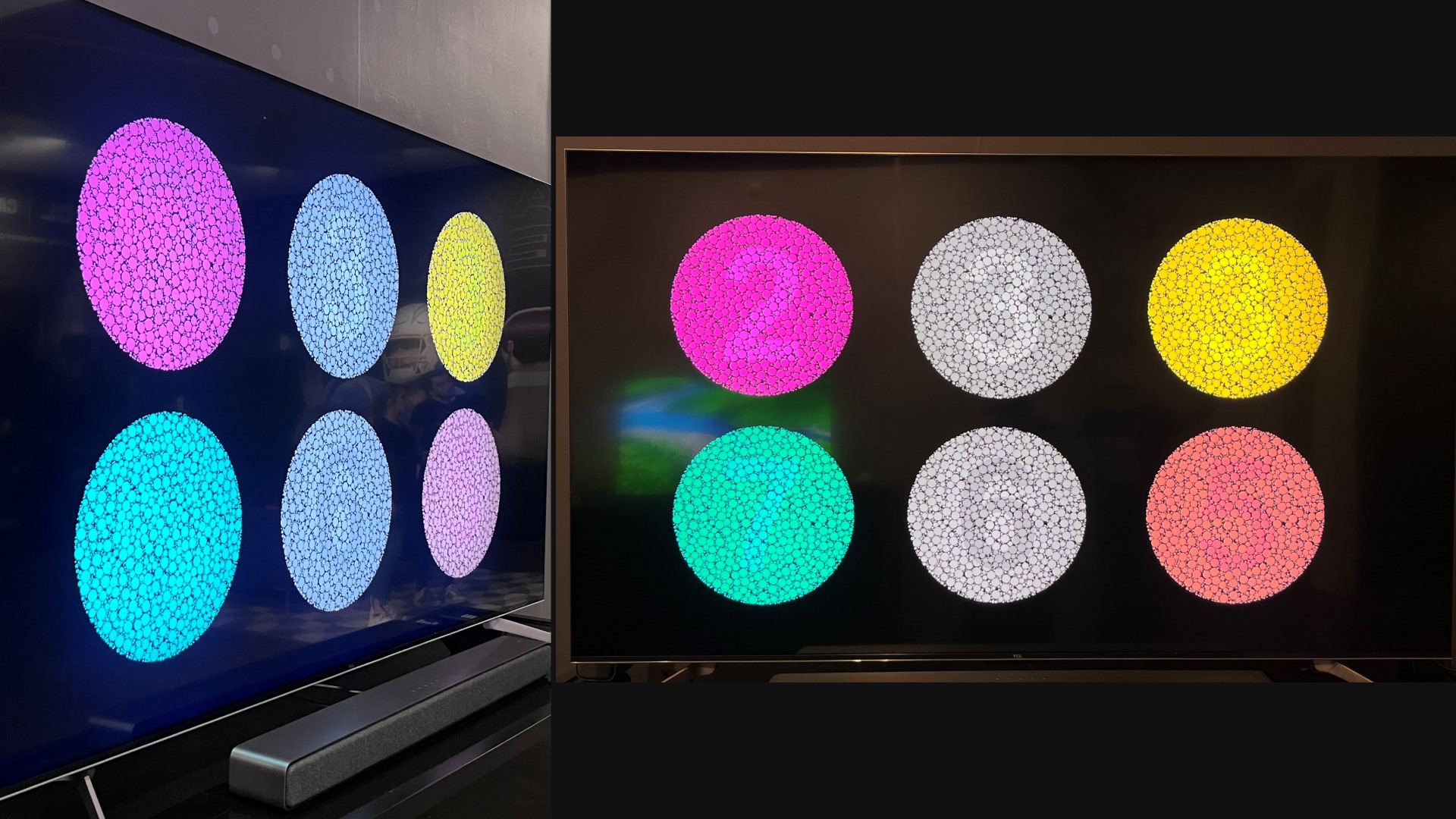
The relatively bright lighting also resulted in some screen glare, as you can see in the above image. The same image shows the set’s average off-axis performance, with color saturation and picture contrast fading when viewed from an off-center position.
With the same AIPQ Engine Gen3 processor as the QM8, the Q7’s handling of motion and noise was similarly impressive as that step-up model. I would have liked more time to evaluate and make a call on the TV’s local dimming performance, but time constraints prevented me from doing so.
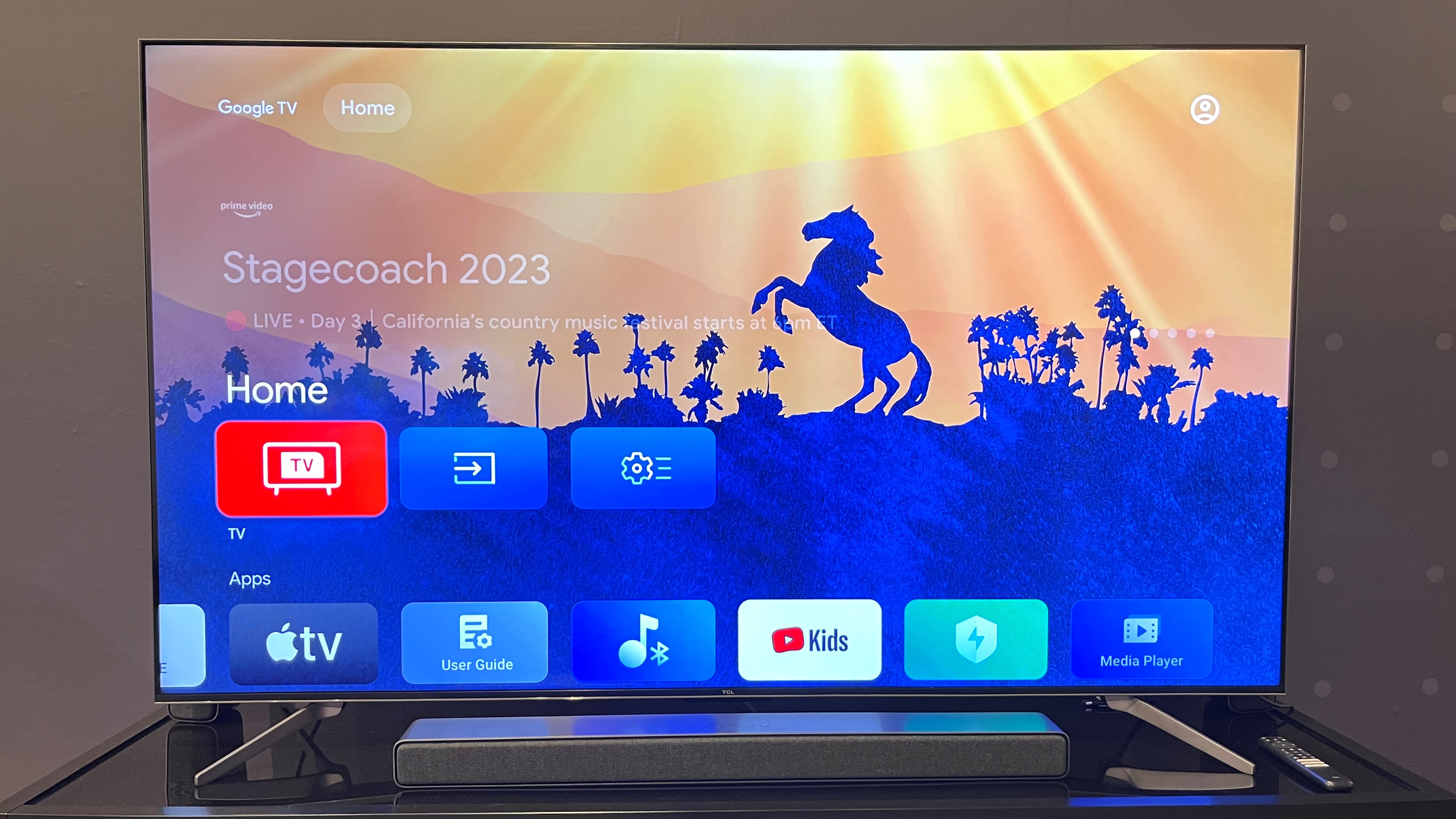
At $2,199.99, TCL’s 85-inch QLED TV offers a great range of features and good overall performance for the price. It does lack the impressive HDR brightness of the step-up TCL QM8 class, which will run you an extra $600 for a set with the same screen size.
Does the added brightness the QM8’s mini-LED backlight brings justify the extra cost? That will depend on your environment – brighter is always better for well-lit rooms and daylight viewing of sports – and your expectations for added dynamic punch in movies with HDR. But with the company’s brighter 6-Series TVs still available to buy at a similar price, the Q7’s main competition appears to be TCL itself.
Shopping for a new big-screen TV? Check out our guide to the best 85-inch TVs to find other options.
0 comments:
Post a Comment